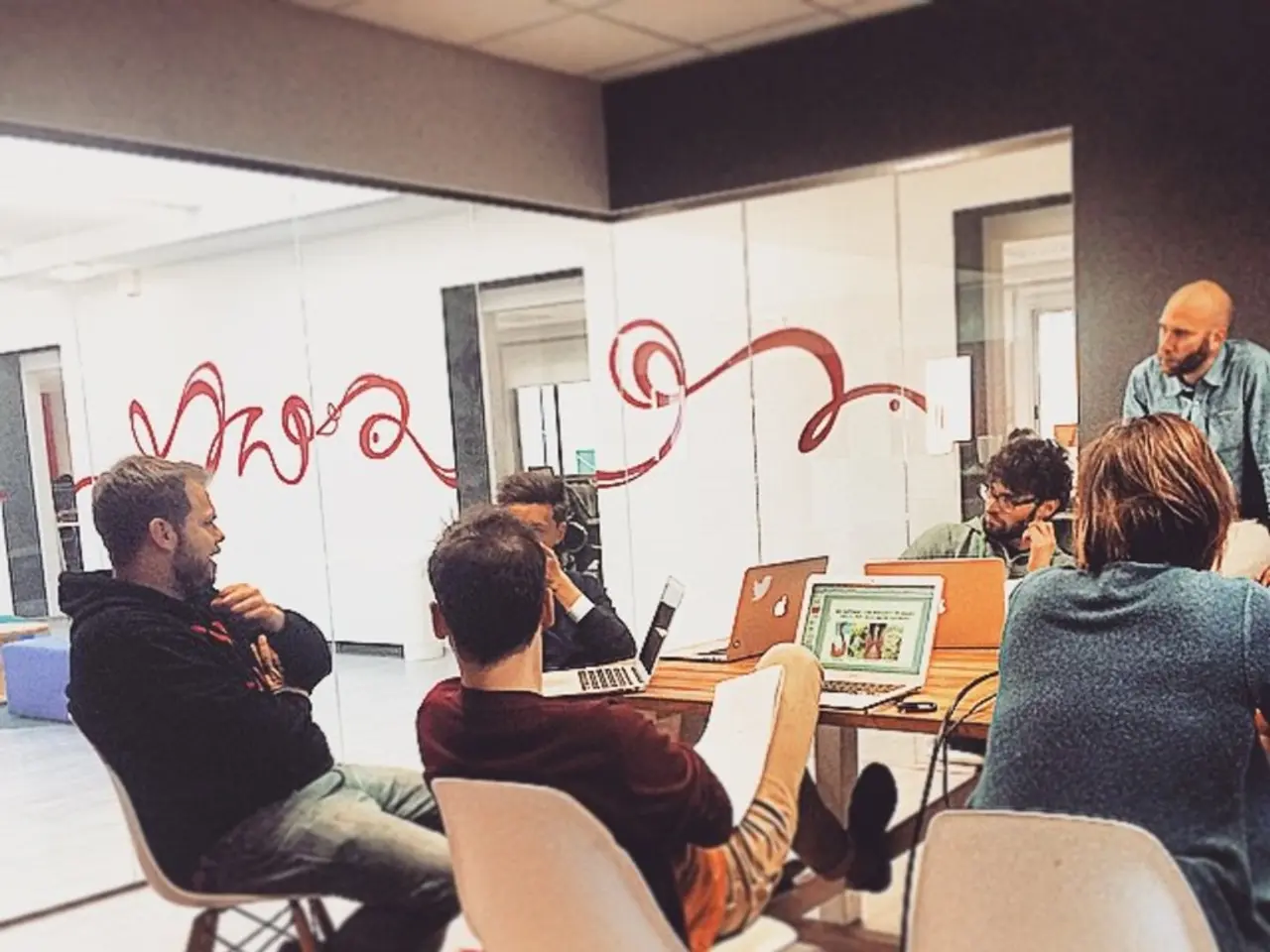Is gamification a potential solution for re-energizing unmotivated employees?
In the modern business landscape, employee engagement is a critical factor in driving productivity and success. However, a significant portion of the workforce remains disengaged, leading to a staggering loss of $450 billion to $550 billion in productivity annually. To address this issue, companies are turning to innovative strategies, such as gamification, to engage employees and boost performance.
One such example is Siemens, which uses a social game called PlantVille to train its employees. This game simulates the experience of being a plant manager, allowing new hires to learn about Siemens' products and hone skills such as decision-making and employee satisfaction. By making learning enjoyable and interactive, PlantVille has proven effective in improving retention rates.
SAP, another tech giant, has implemented gamification with an application called Roadwarrior. This multiple-choice game helps sales reps learn and retain information about new products, with a competitive twist. Sales reps compete against each other to rank as leaders in an area of expertise, fostering friendly competition and promoting continuous learning.
Gamification, the use of gaming elements to increase interest and investment in tasks, is expected to grow to $5.5 billion by 2018. By strategically incorporating game design elements—such as points, badges, leaderboards, and rewards—into daily work activities and learning programs, companies can drive motivation, enjoyment, skill development, and team cohesion.
Key best practices include aligning gamification closely with business and learning goals, fostering friendly competition and collaboration, setting clear and measurable milestones, progressively increasing task difficulty, providing continuous real-time feedback, and balancing virtual and tangible rewards. This approach supports motivation, enjoyment, skill development, and team cohesion, driving performance improvement and company culture in a sustainable way.
Research supports the effectiveness of gamification. Gallup found in a meta-analysis that organisations with a high level of engagement report 22% higher productivity. Engaged organisations also have double the rate of success, lower absenteeism and turnover, and even better health.
However, successful implementation of gamification requires careful planning and buy-in from employees. Chris Pyle, CEO of MessageOps, states that businesses can't expect adoption to happen on its own. Benefits and perks are not as important as employers think in driving engagement. The most effective way to drive engagement is to focus on making an employee's day-to-day, hour-to-hour, or task-to-task experience better.
In conclusion, gamification offers a promising solution to the issue of low employee engagement and productivity. By thoughtfully designing gamification programs that reflect best practices, companies can create fun, goal-driven environments that enhance employee motivation, collaboration, learning, and overall workplace productivity.
- In the realm of personal finance, adopting gamification techniques could potentially boost savings habits, turning mundane tasks like budgeting into an engaging challenge.
- For the fashion-and-beauty sector, gamification could offer an interactive way for customers to 'try on' virtual outfits or makeup looks, facilitating better purchasing decisions.
- In food-and-drink establishments, gamification might be employed to create engaging dining experiences, such as digital quizzes or loyalty programs.
- Companies specialising in home-and-garden products might use gamification to educate customers about proper usage and maintenance, making learning about these topics more enjoyable.
- Within the business world, gamification can aid in career development by offeringółNP stratégies de développement professionnel, such as virtual leadership simulations.
- Job-search platforms may implement gamified features, making the often daunting process more engaging and effective.
- Education-and-self-development platforms can leverage gamification to encourage learning and skills training by integrating digital challenges and rewards.
- Technology companies could apply gamification to artificial-intelligence development, making complex programming tasks more approachable and engaging.
- In relationships, gamification might be used to foster better communication, promote mutual understanding, and encourage growth through engaging activities and challenges.
- For pet owners, gamified apps could facilitate playtime or training sessions, offering owners a fun and interactive way to bond with their pets.
- In the travel industry, gamification can create enjoyable experiences by offering digital scavenger hunts, destination trivia, or interactive itinerary planning.
- For car enthusiasts, gamified racing games could connect real-world driving challenges to virtual competitions, encouraging safer driving habits.
- In the world of sports, gamification could offer fan-engagement opportunities, such as predictive sports betting simulations orScore analysis games based on real-world data.
- For weather forecasting, gamification might provide an interactive way to improve public understanding of weather patterns and meteorology.
- In the sphere of sports like basketball (NBA, WNBA, or NCAA basketball), gamification could offer engaged experiences, such as virtual training sessions or team management simulations.
- In terms of personal growth, gamification could be employed to create engaging self-improvement plans, encouraging users to set and achieve their goals in areas such as lifestyle, skills, or sports.




